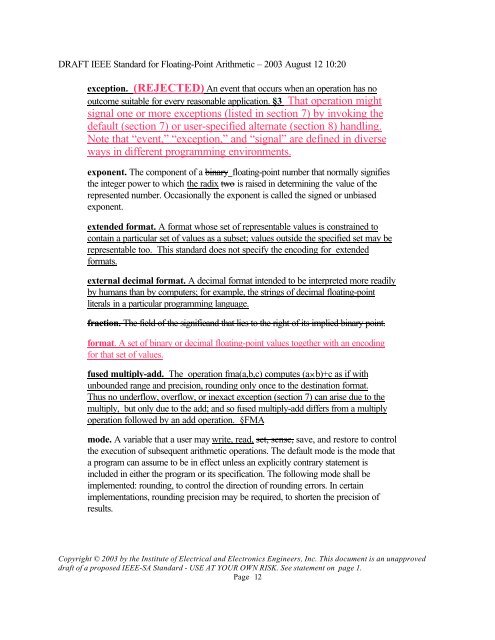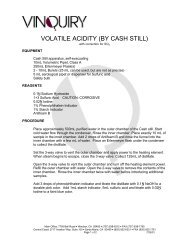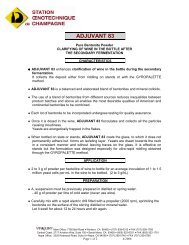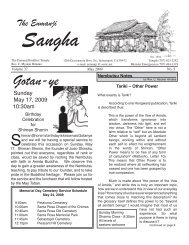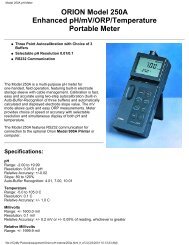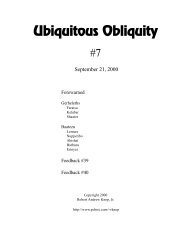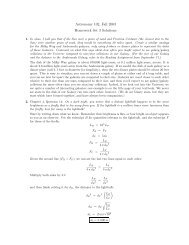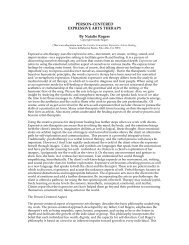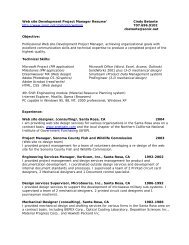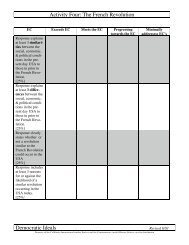DRAFT IEEE Standard for Binary Floating-Point Arithmetic - Sonic.net
DRAFT IEEE Standard for Binary Floating-Point Arithmetic - Sonic.net
DRAFT IEEE Standard for Binary Floating-Point Arithmetic - Sonic.net
You also want an ePaper? Increase the reach of your titles
YUMPU automatically turns print PDFs into web optimized ePapers that Google loves.
<strong>DRAFT</strong> <strong>IEEE</strong> <strong>Standard</strong> <strong>for</strong> <strong>Floating</strong>-<strong>Point</strong> <strong>Arithmetic</strong> – 2003 August 12 10:20<br />
exception. (REJECTED) An event that occurs when an operation has no<br />
outcome suitable <strong>for</strong> every reasonable application. §3 That operation might<br />
signal one or more exceptions (listed in section 7) by invoking the<br />
default (section 7) or user-specified alternate (section 8) handling.<br />
Note that “event,” “exception,” and “signal” are defined in diverse<br />
ways in different programming environments.<br />
exponent. The component of a binary floating-point number that normally signifies<br />
the integer power to which the radix two is raised in determining the value of the<br />
represented number. Occasionally the exponent is called the signed or unbiased<br />
exponent.<br />
extended <strong>for</strong>mat. A <strong>for</strong>mat whose set of representable values is constrained to<br />
contain a particular set of values as a subset; values outside the specified set may be<br />
representable too. This standard does not specify the encoding <strong>for</strong> extended<br />
<strong>for</strong>mats.<br />
external decimal <strong>for</strong>mat. A decimal <strong>for</strong>mat intended to be interpreted more readily<br />
by humans than by computers; <strong>for</strong> example, the strings of decimal floating-point<br />
literals in a particular programming language.<br />
fraction. The field of the significand that lies to the right of its implied binary point.<br />
<strong>for</strong>mat. A set of binary or decimal floating-point values together with an encoding<br />
<strong>for</strong> that set of values.<br />
fused multiply-add. The operation fma(a,b,c) computes (a× b)+c as if with<br />
unbounded range and precision, rounding only once to the destination <strong>for</strong>mat.<br />
Thus no underflow, overflow, or inexact exception (section 7) can arise due to the<br />
multiply, but only due to the add; and so fused multiply-add differs from a multiply<br />
operation followed by an add operation. §FMA<br />
mode. A variable that a user may write, read, set, sense, save, and restore to control<br />
the execution of subsequent arithmetic operations. The default mode is the mode that<br />
a program can assume to be in effect unless an explicitly contrary statement is<br />
included in either the program or its specification. The following mode shall be<br />
implemented: rounding, to control the direction of rounding errors. In certain<br />
implementations, rounding precision may be required, to shorten the precision of<br />
results.<br />
Copyright © 2003 by the Institute of Electrical and Electronics Engineers, Inc. This document is an unapproved<br />
draft of a proposed <strong>IEEE</strong>-SA <strong>Standard</strong> - USE AT YOUR OWN RISK. See statement on page 1.<br />
Page 12


